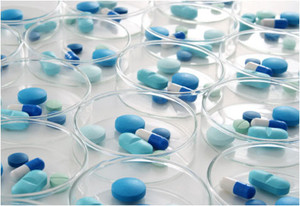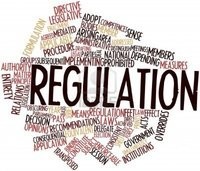With US Congressional actions on biosimilar/follow-on biologics approaching, the FDA has issued a Guidance regarding the use of pens, jets, and other related injectors (see Draft Guidance for Industry and FDA Staff: Technical Considerations for Pen, Jet and Related Injectors Intended for Use with Drugs and Biological Products, April 2009). The Guidance recognises that these are innovative approaches to deliver drugs or biologics products that may enhance accuracy and patient compliance.
Regulatory reflections on the FDA’s guidance on biosimilars and follow-on branded biologics
Home/Guidelines
|
Posted 05/10/2009
 0
Post your comment
0
Post your comment

One major significant issue of this Guidance lies in its application to biosimilars, facilitating their conversion into higher-value follow-on branded biologics. As an example, Novo Nordisk is now introducing its next generation FlexPen, a prefilled insulin delivery device that the company reports has a 25–41% lower force than the existing SoloStar and KwikPen devices; diabetic patients prefer lower-force insulin injections since they are less painful.
After obtaining FDA approval to market in the US, a first-generation biological may have little commercial value as a commodity product and have a BX rating (not substitutable), since most biopharma companies have developed a second- or third-generation biological with an innovative delivery system – a specialty product. It is anticipated that specialty products will command prices near or only 10–20% less than that of the originator product even though they will not have a BX rating (BX ratings are assigned to drug products by the FDA when there is insufficient information to determine therapeutic equivalence). In this scenario, the initial approval of the first-generation biosimilar is really a strategy to rapidly enter the marketplace, and then quickly evolve into a higher-value specialty, often called a follow-on branded product.
The Guidance specifically outlines the regulatory data contents for marketing applications and makes the transition from a commodity biosimilar to a higher-value specialty follow-on branded product. It should not be lost on those utilising this development vehicle that the limiting step in market penetration will be the lack of an AB substitutability rating; thus follow-on high-value branded specialty products will either require sales forces or significantly lower prices to make them attractive (AB ratings are assigned by the FDA for products that are therapeutically equivalent).
One can anticipate that in their lifecycle management strategies, biopharma companies of originator products will now develop patent strategies to anticipate this competitive follow-on branded approach. Companies developing new delivery technologies that improve safety and/or efficacy of biologicals will be attractive investments in the future for both originator and biosimilar manufacturers.
It is interesting that Johnson & Johnson recently announced that it would consider selling branded generics abroad, perhaps in partnership with another company. Novartis, Pfizer and other major pharma companies are pursuing similar strategies. One wonders if follow-on branded biologics will be far behind these marketing activities.
An argument against approval of glycosylated biosimilars has been the significant carbohydrate differences caused by different expression systems and manufacturing processes in terms of quality, efficacy, potency, and safety of the product. Biological & Pharmaceutical Bulletin recently published an analysis of the glycosylation patterns of four epoetin products (α and β) available in Japan and found tangible differences in acetylation of sialic acids and significant differences in the nonfucosylated oligosaccharides.
One can anticipate the regulatory need for safety data to demonstrate that any glycosylation differences do not adversely impact the biosimilar. While non-US manufacturers can collect patient safety data from their early entry into local markets, US-based biosimilar companies will need to consider having stronger preclinical and clinical databases to address this concern. This potential negative regulatory safety presumption should also be viewed from the safety profile of goat antithrombin alfa approved by EMEA in 2006, which has the same protein structure but different glycosylation patterns than the originator product.
While presenting a regulatory challenge, glycosylation also presents companies that developed the originator and the biosimilar/follow-on branded biologics opportunities to defend their product franchises and also to create safer and/or more therapeutic second- and third-generation products.
Promoting Innovation and Access to Life-Saving Medicine Act (HR 1427, a bill from the first session of the 111th Congress) and the Federal Trade Commission (FTC)’s report titled Emerging Health Care Issues: Follow-on Biologic Drug Competition are intended to provide the rationale for moving access to biosimilars/follow-on biologics and driving the legislative compromise. Of particular interest is the FTC’s projection of what cost savings (10–30%) will actually be achieved, and that the originator biological manufacturer may likely retain 90% of its market.
When a new human growth hormone (hGH) product tried to compete with Genentech’s hGH, physicians hesitated to move patients on to it, so its market was just new patients. If there is only a 10–30% price differential for biosimilar/follow-on biologics and they lack an AB substitutability rating, one would anticipate the same reluctance to switch patients.
Source: Genetic Engineering & Biotechnology News
Policies & Legislation
ANVISA tackles 24-month backlog in biologicals post-registration petitions
US EO: delivering Most-Favored-Nation Prescription Drug Pricing to American patients
Most viewed articles
The best selling biotechnology drugs of 2008: the next biosimilars targets
Global biosimilars guideline development – EGA’s perspective
New guidance for biologicals in Pakistan and Hong Kong’s independent drug regulatory authority

Home/Guidelines Posted 20/10/2025
Canada poised to remove requirement for Phase III trials for biosimilars

Home/Guidelines Posted 22/07/2025
The best selling biotechnology drugs of 2008: the next biosimilars targets








Post your comment